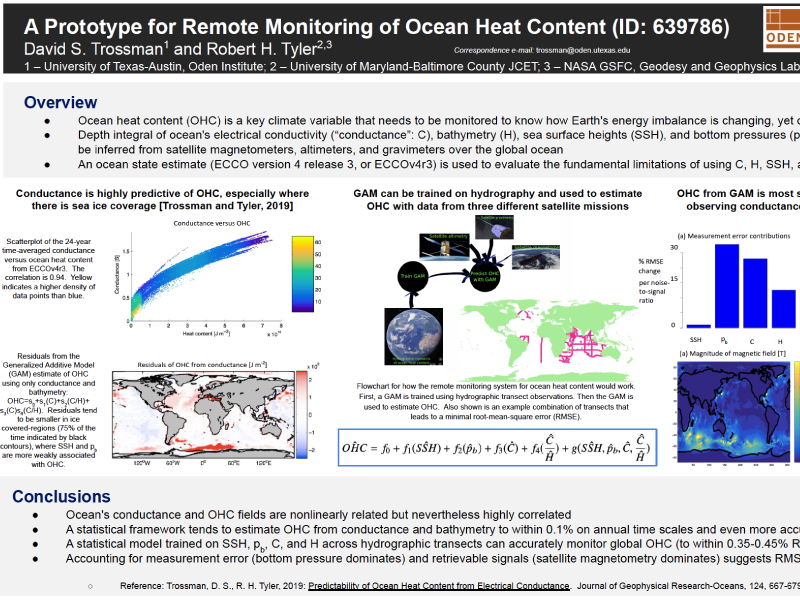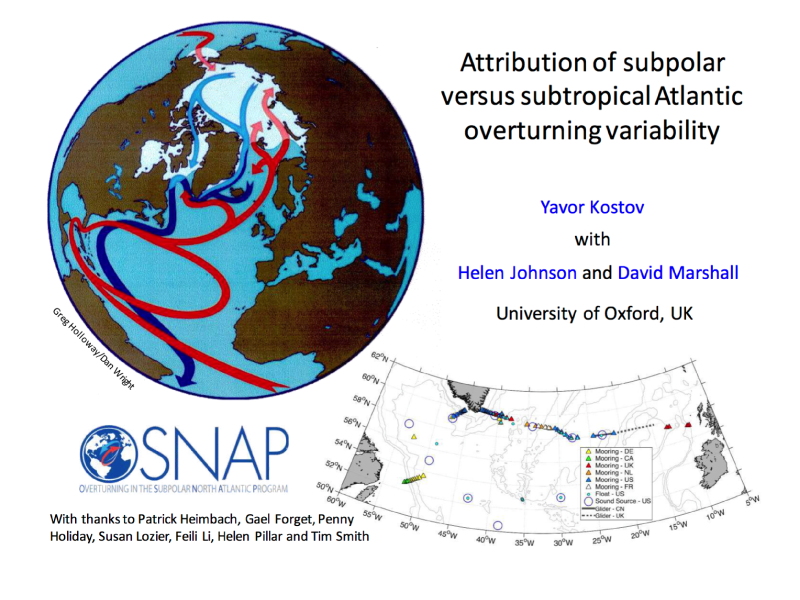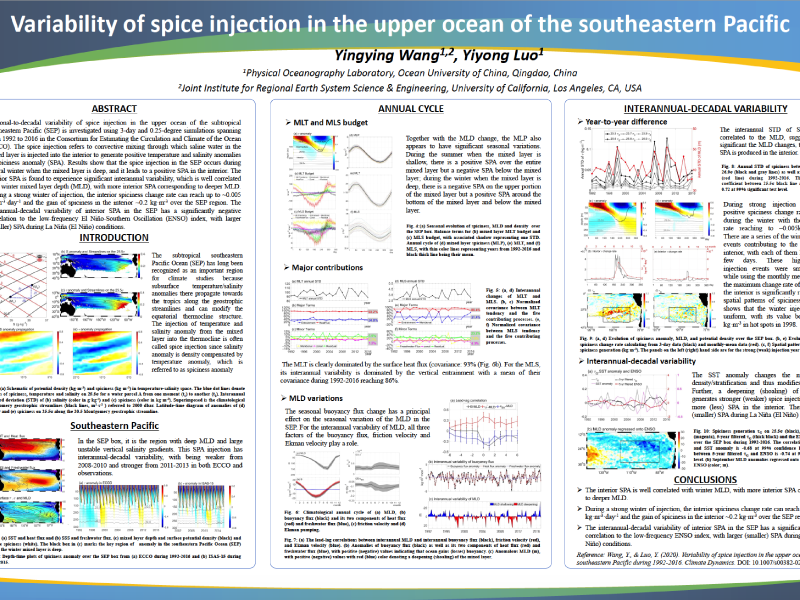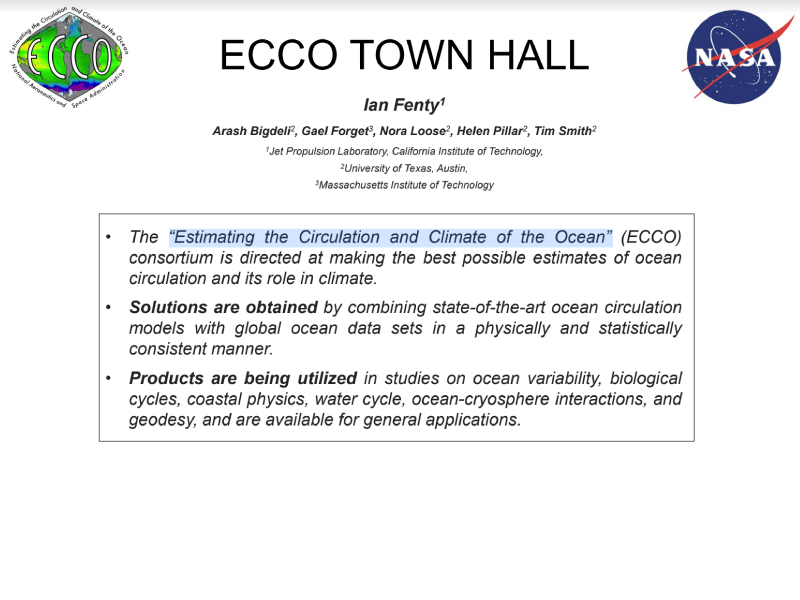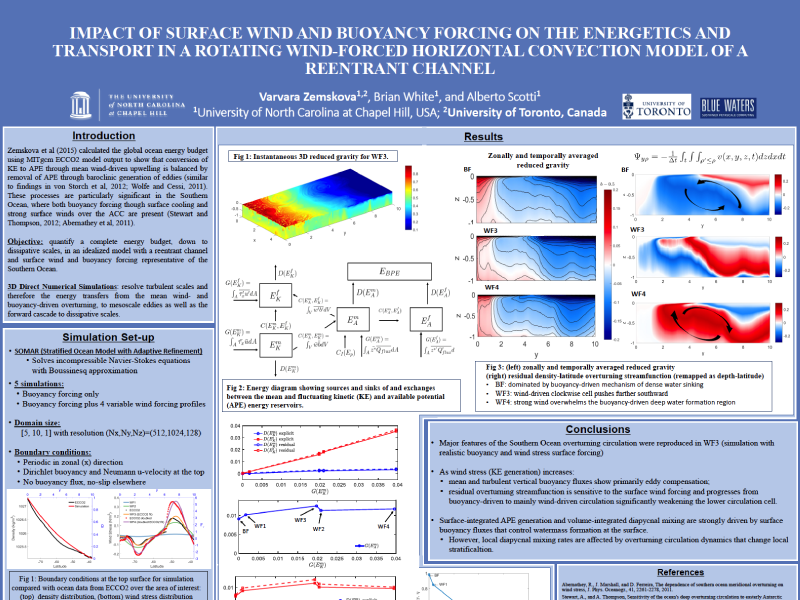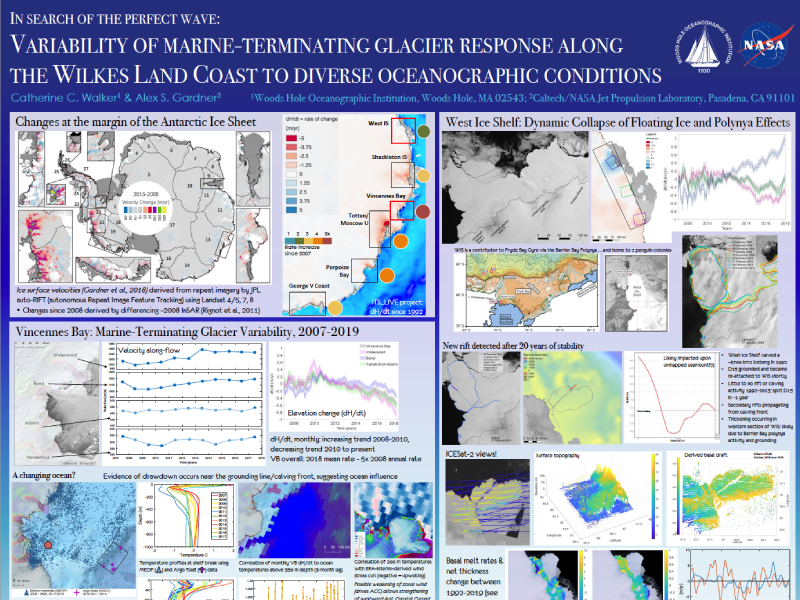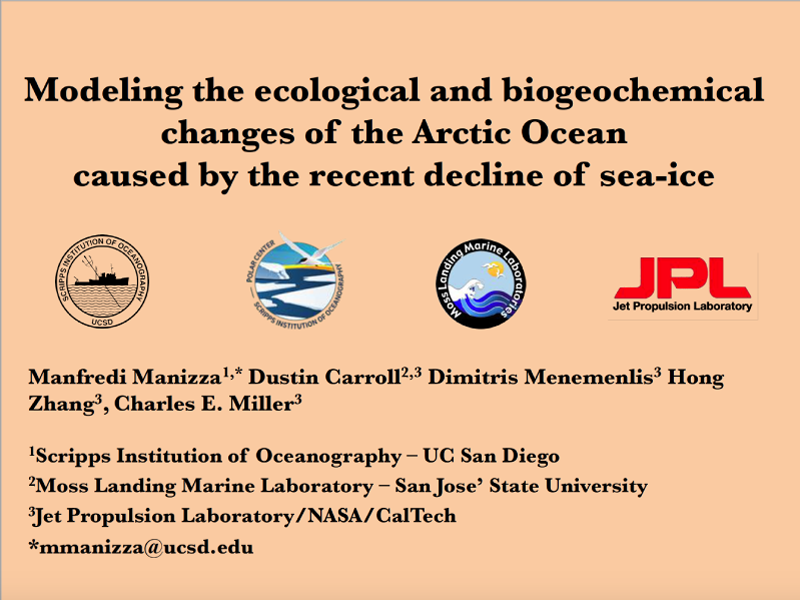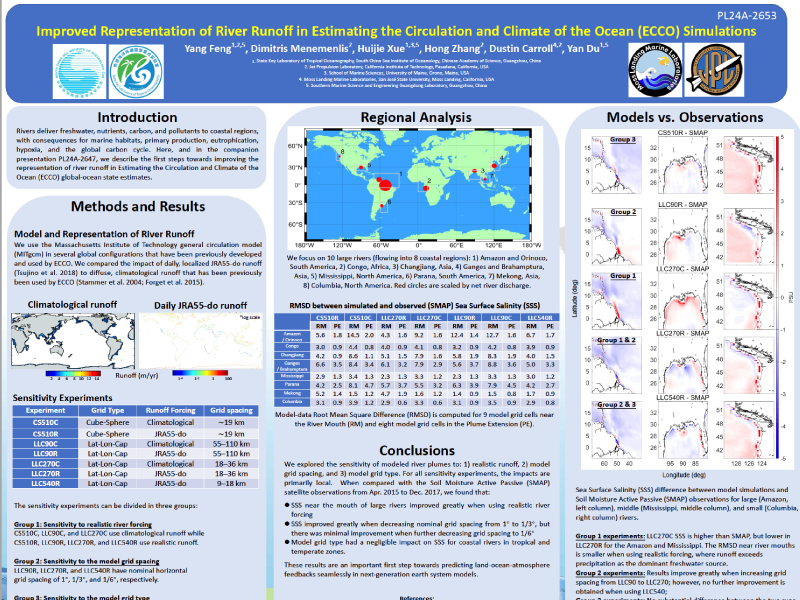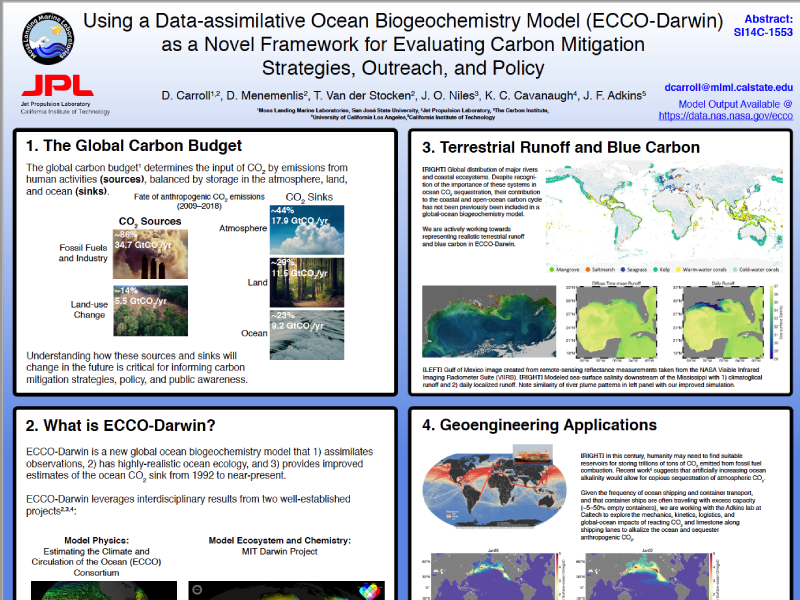Meeting Presentations
Ocean Sciences Meeting 2020
The Ocean Sciences Meeting is the flagship conference for the ocean sciences and the larger ocean-connected community. As we approach the UN Decade of Ocean Science for Sustainable Development beginning in 2021, it is increasingly important to gather as a scientific community to raise awareness of the truly global dimension of the ocean, address environmental challenges, and set forth on a path towards a resilient planet.
Ocean Sciences Meeting 2020 is co-sponsored by AGU, the Association for the Sciences of Limnology and Oceanography (ASLO), and The Oceanography Society (TOS). Through the combined power of these three organizations, along with the broader conservation-focused community, this meeting provides attendees the opportunity to bridge disciplines, connect communities, and make lasting partnerships.
▲
A Prototype for Remote Monitoring of Ocean Heat Content
Trossman, D.S. and Tyler, R. Ocean heat content (OHC) is a key climate variable that needs to be monitored to understand how sea level is changing, yet observing OHC remains a challenge. MORE »▲
Asymmetric Decadal Sea Level Trends in the Subtropical Pacific
Schloesser, F., Thompson, P.R., and Piecuch, C.G. Recent sea surface height trends in the South Pacific are substantially greater than trends in the Northern Hemisphere. MORE »▲
Attribution of Subtropical Versus Subpolar Atlantic Overturning Variability
Johnson, H., Kostov, Y., and Marshall, D.P. The Atlantic meridional overturning circulation (AMOC) is important for regional and global climate due to its key role in the uptake and redistribution of heat, carbon and other tracers. MORE »▲
Climatic Variability of Spice Injection in the Upper Ocean of the Southeastern Pacific During 1992-2016
Wang, Y. and Luo, Y. Seasonal-to-decadal variability of spice injection in the upper ocean of the subtropical southeastern Pacific is investigated using 3-day and 0.25-degree simulations spanning from 1992 to 2016 in the Consortium for Estimating the Circulation and Climate of the Ocean (ECCO). ... MORE »▲
Estimating the Circulation and Climate of the Ocean (ECCO) Town Hall: The Latest Global Ocean and Sea Ice State Estimate from the ECCO Consortium
Fenty, I., Bigdeli, A., Forget, G., Loose, N., Pillar, H., and Smith, T. This Town Hall focuses on ocean and sea-ice state estimation: reconstructing the three-dimensional time-evolving ocean state by combining diverse satellite and in-situ ocean and ice data with numerical models in a rigorous and quantitative framework. MORE »▲
Exploring the Information Potency of OSNAP Mooring Data in the Arctic and Subpolar Gyre State Estimate
Pillar, H., Nguyen, A.T., Heimbach, P., Bigdeli, A., Loose, N., Ocaña, V., Lozier, S., and Li, F. The disproportionate importance of the subpolar North Atlantic in the global climate system arises from the strong heat loss and associated water mass transformation in the region, which shape the strength and structure of the AMOC and its associated heat redistribution. ... MORE »▲
Impact of Surface Wind and Buoyancy Forcing on the Energetics and Transport in a Rotating Wind-forced Horizontal Convection Model of a Reentrant Channel
Zemskova, V., White, B.L., and Scotti, A.D. We present numerical results for an idealized rotating, buoyancy- and wind-forced channel as a simple model for the Southern Ocean branch of the Meridional Overturning Circulation. MORE »▲
In Search of the Perfect Wave: Variability of Marine-terminating Glacier Response along the Wilkes Land Coast to Diverse Oceanographic Conditions
Walker, C.C. and Gardner, A.S. East Antarctica has been relatively stable over the last ~decade (Gardner et al., 2018). MORE »▲
Interannual Variability in the Oxygen Budget of the Subpolar North Atlantic Ocean
Moseley, L., McKinley, G.A., Dussin, R., and Nguyen, A. In the face of ocean warming and increasing demand for oxygen by marine animals, it is imperative to understand the climate-induced variability of the ventilation of the ocean interior. MORE »▲
Interior Water-Mass Variability in the Southern Hemisphere Oceans during the Last Decade
Rodriguez, E.P., Kolodziejczyk, N., Maes, C., and Thierry, V. Using an Argo dataset and the reanalysis ECCOv4, a volume budget was performed to address the main mechanisms implied in the volume change of the interior water masses in the southern-hemisphere oceans between 2006 and 2015. MORE »▲
Local Winds drive Interannual Variability of the Gulf Stream North Wall Path - Results from an Adjoint Sensitivity Analysis
Wolfe, C. and Liu, X. . The Gulf Stream is bounded to the north by a strong temperature front known as the North Wall. MORE »▲
Modeling the Ecological and Biogeochemical Changes of the Arctic Ocean caused by the Recent Decline of Sea-Ice
Manizza, M., Carroll, D., Menemenlis, D., Zhang, H., and Miller, C.E. One of the most visible effects of Arctic Ocean warming is the drastic loss of sea-ice cover over the last four decades, including two extreme sea-ice loss events during September 2007 and 2012. MORE »▲
Seasonal and Interannual Variability of Freshwater Transport at River-Dominated Ocean Margin Systems from 1992-2018: Results from the Global ECCO2 with Real-time Discharge
Feng, Y., Menemenlis, D., Xue, H., and Liu, Z. River plume dynamics generated considerable research interests for the past decade due to the important role in coastal ecology, biogeochemistry, shoreline morphology and climate. MORE »▲
Studying Atmospheric Forcing Mechanisms for Sea Level Change using ECCO Adjoint - an Example near Nantucket Island
Zhang, H., Fenty, I.G., Fukumori, I., Lee, T., Menemenlis, D., and Wang, O. Sea level change has high societal relevance, especially for low-lying and flood-vulnerable coastal regions. MORE »▲
Thermodynamics and Variability of Antarctic Bottom Water in the Weddell Sea
Bailey, S. The circulation of deep and abyssal waters (waters at or below 2,000m) is an important part of the Southern Ocean global meridional overturning circulation (SOMOC). MORE »▲


